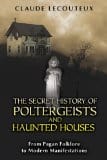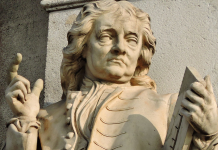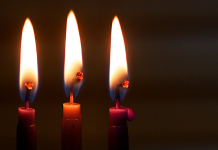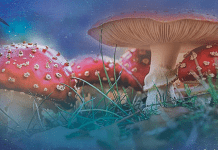
 The Secret History of Poltergeists and Haunted Houses: From Pagan Folklore to Modern Manifestations, by Claude Lecouteux
The Secret History of Poltergeists and Haunted Houses: From Pagan Folklore to Modern Manifestations, by Claude Lecouteux
Editions Imago, Inner Traditions, 9781594774652, 246 pp., 2007, 2012
Claude Lecouteux offers an exhaustively researched history of poltergeist activity and hauntings from the middle ages to today. Packed full of case histories and general information, The Secret History of Poltergeists and Haunted Houses is an essential addition to the library of any serious ghost hunter or paranormal enthusiast. Lecouteux maintains an evidential viewpoint, balancing skepticism with the inevitable conclusion that, like it or not, poltergeist phenomenon is real.
One particular gem is a chart1 that compares the views of different eras regarding “Poltergeists due to the presence of living beings.” In the Pagan Middle Ages, this activity was mostly attributed to the dead, genies, and spirits. During the Christian Middle Ages, attribution was given to the devil, demons, and the dead. In post-Medieval times (16th-17th centuries), witchcraft and hoaxes were usually to blame, and of late, paranormal researchers attribute the phenomena to the dead or people with psychic abilities. With regard to the difference between spirits and the ghosts, Lecouteux writes:
According to an opinion that has been widespread over the centuries, there is both a world of spirits and a world of the dead that exist parallel to our own. The first is called the Otherworld and is peopled by elemental spirits – fairies, dwarves, elves, and so forth – and the second is called the Beyond. Both worlds communicate and interfere with the world of the living. In ancient times the Beyond opened up on a regular basis, and the dead had license to roam over the earth. […] According to some mythologists, the Beyond preceded the birth of the Otherworld, for which it would be the root. The former remained the land of the dead, whereas the other developed to offer a euphemistic and mythical vision of it. […] Over the course of the centuries the reintegration of the dead into our close environment took place in the form of what one commonly and improperly called ‘spirits’ – a more vague term than one might wish for, but convenient as it functions more abstractly, encompassing all sorts of manifestations. […] The difference between the world of the dead and that of the so-called spirits gradually blurred to produce a single universe, that world of the others.2
Appendix I supplies the “Rite for the Exorcism of a House Tormented by a Demon,” in English as opposed to the original Latin, giving modern day investigators an additional tool for their arsenals.3
Appendix II describes “A Hoax” that occurred in 1649,4 Appendix III gives an account of “A Poltergeist in Turin (1900),5 Appendix IV provides a “more recent account” from 1995 of “The Haunted House of Iasi,”6 and Appendix V describes a Romanian ghost, “The Ghost of Titina” from 2005.7 Chapter notes are extensive (almost 20 pages long!) as is the bibliography. The book includes an eight-page index, something not often found in occult works.
This book is not a breezy read, but the tone of the writings blends well with the quoted material culled from historical accounts often several hundred years old. Historical accounts are provided in modern English, easing the pain of assimilating the information. Lecouteux quotes extensively from other works. He provides general information and introductions to each case, and then allows the case material to speak for itself. One of the oldest cited cases references The City of God, by Saint Augustine (354-430), whereas most case files are dated between 1500-1800.
Lecouteux provides a more academic report of poltergeist and haunted house phenomena, compared to modern day ghost “academics” such as Brad Steiger. The Secret History of Poltergeists and Haunted Houses seeks to inform, not entertain, and is a welcome change from the standard book store fare.








